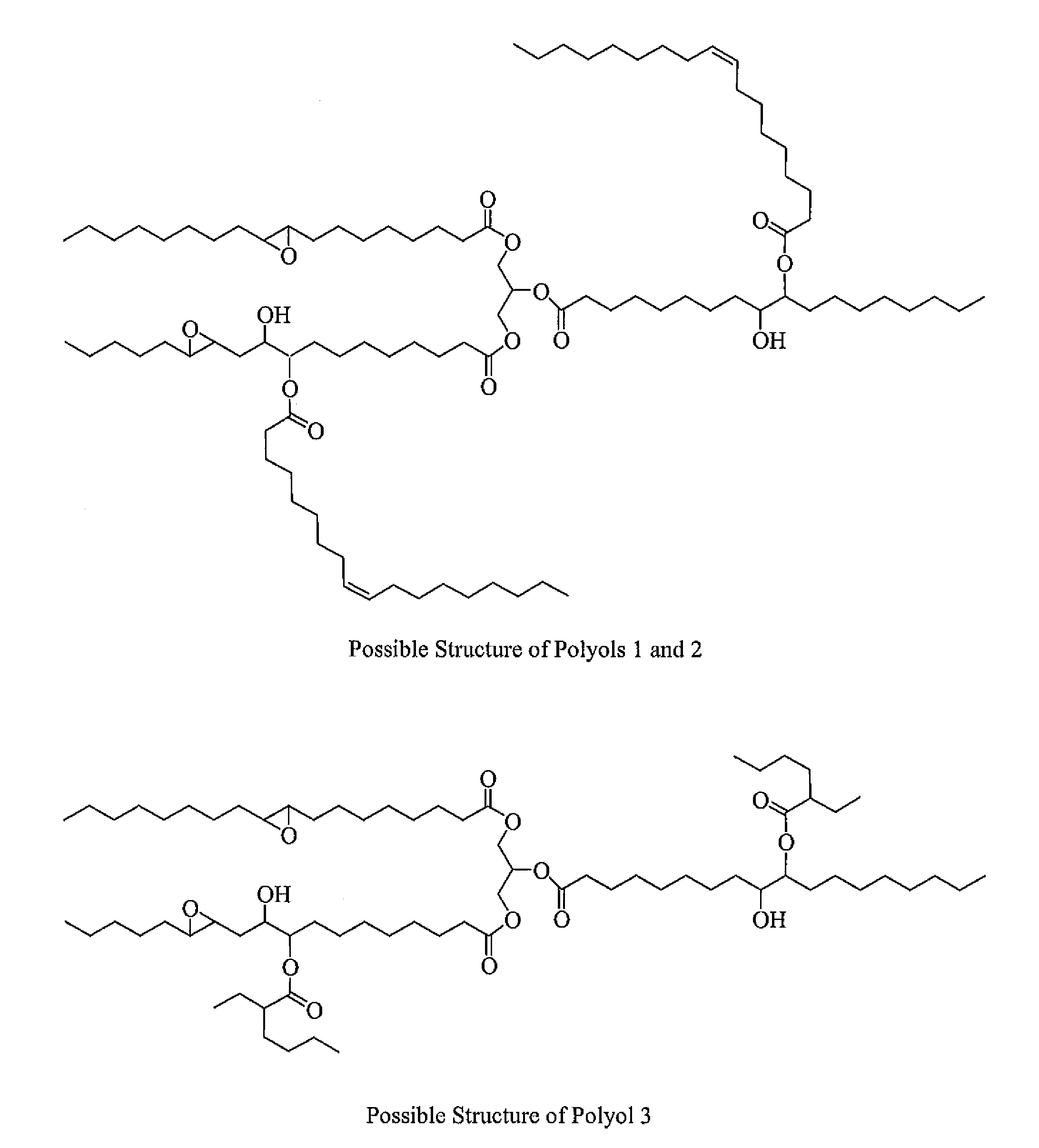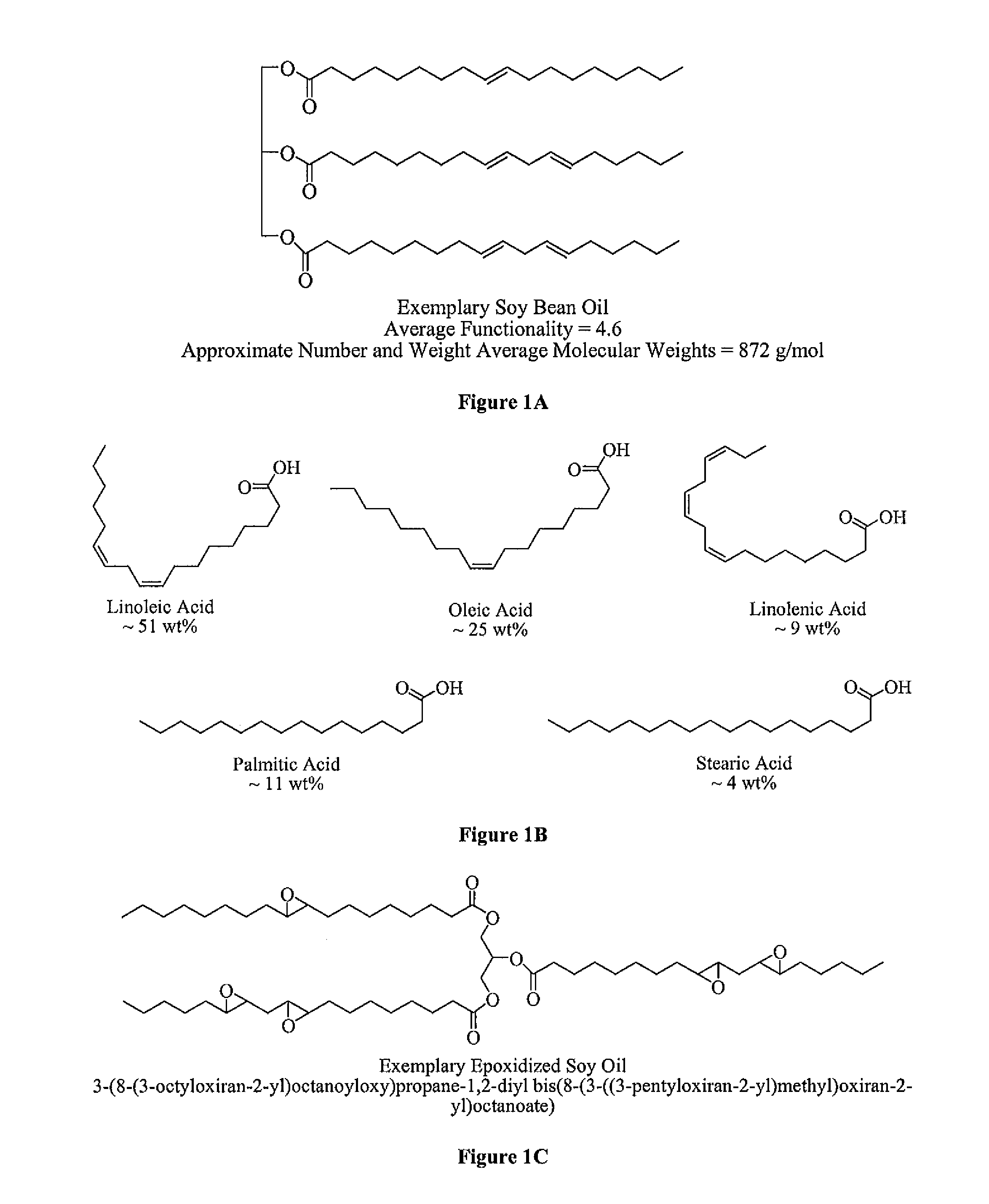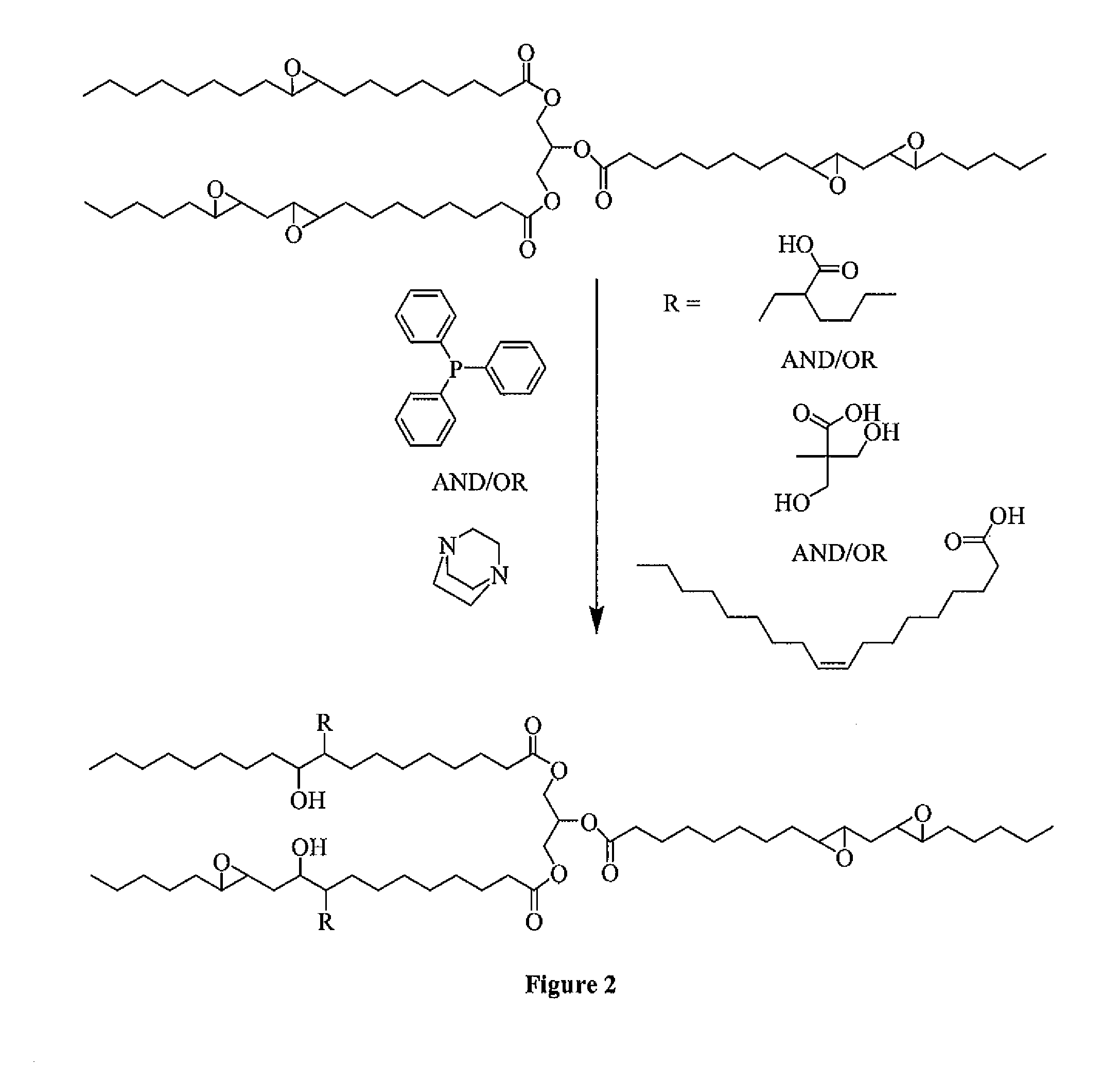Polyol formed from an epoxidized oil
a polyol and epoxidized oil technology, applied in the field of polyol, can solve the problems of increasing the viscosity and polydispersity index, the difficulty of ring opening reactions, and the inability to meet the requirements of epoxidized oil, so as to facilitate the ring opening of internal epoxy groups and minimize the formation of cross-linked structures. , the effect of accurate and consistent manner
- Summary
- Abstract
- Description
- Claims
- Application Information
AI Technical Summary
Benefits of technology
Problems solved by technology
Method used
Image
Examples
examples
[0049]Three polyols (Polyols 1-3) are formed according to the instant invention. Specifically, to form each of the Polyols 1-3, an amount of an Epoxidized Oil is reacted with an amount of an Organic Acid in the presence of a Lewis Base Catalyst. Two Comparative Polyols (Comparative Polyols 1 and 2) are also formed but not according to the instant invention. To form the Comparative Polyol 1, an amount of the Epoxidized Oil and the Organic Acid are reacted. No Lewis Base Catalyst is used to form the Comparative Polyol 1. To form the Comparative Polyol 2, an amount of the Epoxidized Oil and the Organic Acid are reacted in the presence of water, which is used as a Lewis Base Catalyst that does not include any phosphorous or nitrogen atoms. The amounts of each of the Epoxidized Oil, the Organic Acid, and the Lewis Base Catalyst are set forth in Table 1 below wherein all amounts are in grams unless otherwise indicated. After formation, each of the Polyols 1-3 and the Comparative Polyols 1...
PUM
| Property | Measurement | Unit |
|---|---|---|
| equivalent weight | aaaaa | aaaaa |
| polydispersity | aaaaa | aaaaa |
| polydispersity | aaaaa | aaaaa |
Abstract
Description
Claims
Application Information
 Login to View More
Login to View More - R&D
- Intellectual Property
- Life Sciences
- Materials
- Tech Scout
- Unparalleled Data Quality
- Higher Quality Content
- 60% Fewer Hallucinations
Browse by: Latest US Patents, China's latest patents, Technical Efficacy Thesaurus, Application Domain, Technology Topic, Popular Technical Reports.
© 2025 PatSnap. All rights reserved.Legal|Privacy policy|Modern Slavery Act Transparency Statement|Sitemap|About US| Contact US: help@patsnap.com



